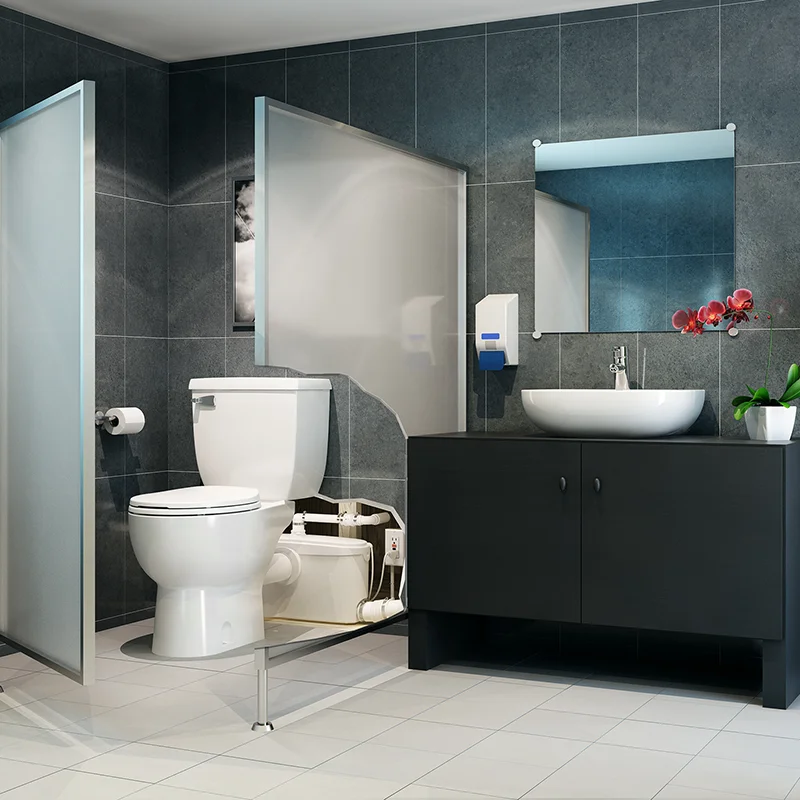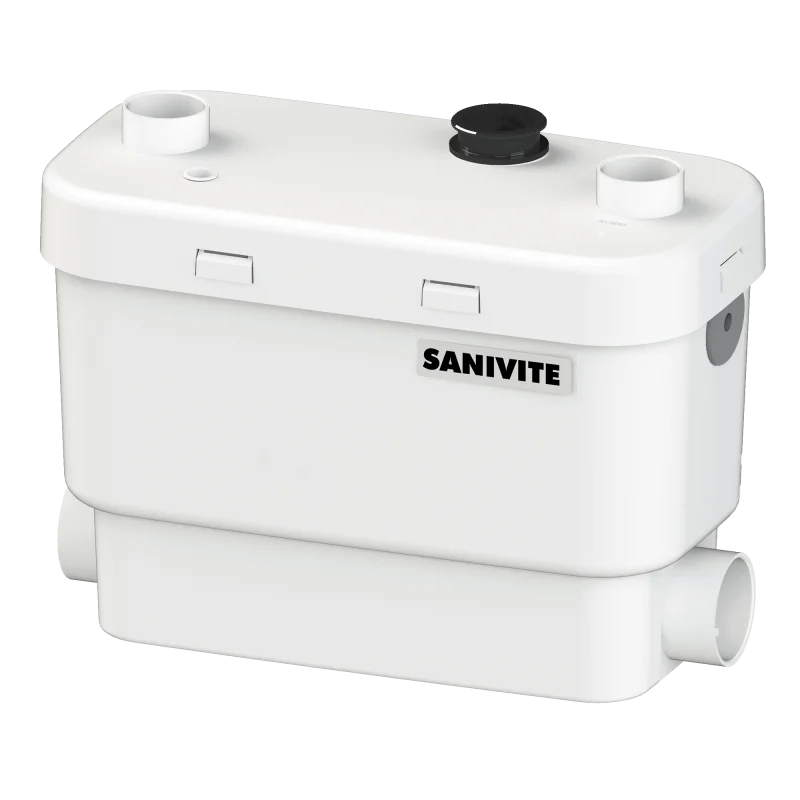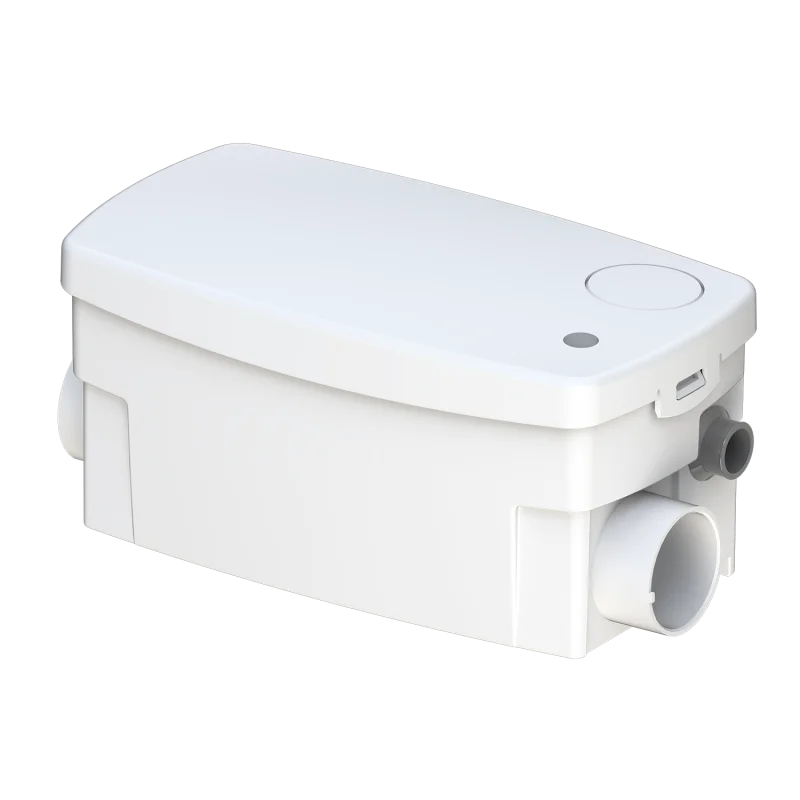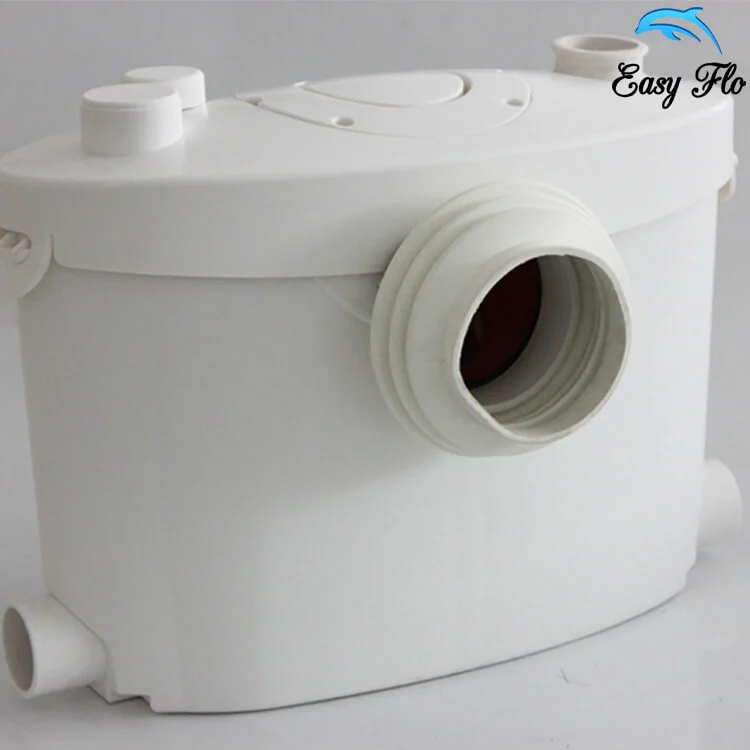When building or renovating a bathroom or kitchen, one of the most important questions is:
How will water and waste exit the space properly?
For that, you need an effective plumbing system. The two main options are:
• Traditional plumbing
• Macerator systems
Both systems serve the same purpose but work in very different ways and are suited to different situations. In this blog, we’ll explain what each system is, how it works, where it can be used, and the pros and cons of each—so you can choose the one that best fits your home.

What Is Traditional Plumbing and How Does It Work?
Traditional plumbing is the most common type of plumbing found in homes. It uses gravity and large drain pipes to carry wastewater from your bathroom or kitchen to the main sewer or a septic tank.
Here’s how it works:
• When you flush the toilet or run water in a sink, the wastewater flows downward through pipes installed under the floors or behind the walls.
• The waste continues through gravity-fed piping until it reaches the sewer line or septic system.
Ideal situations for traditional plumbing:
• When the bathroom or kitchen is near the main drain line
• When gravity can easily carry wastewater downward
• When constructing a new house or completely renovating an old one
Most homes use this method because it’s durable, reliable, and low-maintenance once installed.
What Is a Macerator Toilet or Sink System?
A macerator is a device that helps install a toilet or sink in places where traditional plumbing isn’t practical—like basements, garages, attics, or far corners of your house.
How does a macerator system work?
1. You flush the toilet or use the sink.
2. The waste enters a small unit placed behind the toilet or under the sink.
3. Inside the unit, sharp blades grind the waste into a fine slurry.
4. A pump then pushes the waste through small-diameter pipes into the main drainage line—even upward or sideways, if needed.
Macerator systems are perfect for areas where installing large traditional pipes is not feasible. Water Solutions offers the best range of macerators for home and industries in Pakistan. Visit their website to buy one.
Where Can You Use a Macerator in Your Home?
You can use a macerator system in:
• Basements where traditional pipes can’t go downward
• Attics where pipe installation is difficult
• Garages or outbuildings converted into bathrooms
• Tiny homes or mobile homes with space constraints
• Upstairs bathrooms added after the house was built
Because macerators can pump waste upward, they provide flexibility that traditional plumbing simply can’t match.
Advantages of Traditional Plumbing for Bathrooms and Kitchens
✅ Long-lasting
Once installed correctly, traditional plumbing systems can last 20 to 50 years or more.
✅ Quiet operation
No motors or mechanical parts mean no noise when flushing or draining water.
✅ Low maintenance
As long as it’s properly used, a traditional plumbing system usually doesn’t require frequent repairs or cleaning.
✅ High waste capacity
The large pipe diameter easily handles high volumes of wastewater and solid waste without clogging.
Disadvantages of Traditional Plumbing Systems
❌ Requires major construction
Big pipes must be installed under floors or inside walls, which means breaking concrete or tiles—not ideal for finished homes.
❌ Costly installation
Materials, labor, and time make it expensive to install or reroute traditional plumbing.
❌ Not suitable for low spots
If the bathroom is located below the main sewer line (e.g., in a basement), gravity won’t work, and the waste won’t flow properly.
Benefits of Installing a Macerator System
✅ Easy to install
No need to break floors or walls. Installation can take just a few hours.
✅ Flexible placement
Ideal for adding bathrooms or sinks in remote, elevated, or tight spaces.
✅ Cost-effective for small additions
Installing a macerator is usually cheaper than installing new traditional pipework for a single fixture.
✅ Small pipe size
Macerator systems use thin, flexible pipes that can be easily routed through walls, ceilings, or floors.
Drawbacks of Using a Macerator in Your Bathroom or Kitchen
❌ Makes noise
The motor and blades create a whirring or buzzing sound when grinding and pumping waste.
❌ Requires electricity
Macerators only work when powered. In a power outage, the system cannot flush or drain.
❌ Can clog
You can only flush toilet paper and human waste. Any other material may cause damage or blockage.
❌ More moving parts
Unlike gravity-fed plumbing, macerators have motors, blades, and pumps—which means more components that may need servicing or replacement over time.
To overcome these issues, you can read our insightful article on Fixing Top 12 Common Macerator Toilet Problems.
Macerator vs Traditional Plumbing: A Simple Comparison Table
Feature | Traditional Plumbing | Macerator System |
Installation Difficulty | Hard | Easy |
Cost to Install | High | Low |
Works in Basements | No | Yes |
Pipe Size | Large | Small |
Electricity Needed | No | Yes |
Noise Level | Quiet | Can be noisy |
Handles Heavy Waste | Yes | No |
Maintenance | Low | Medium |
Do Macerators Work During Power Outages?
No, macerators require electricity to function. If there’s a power outage, the pump won’t run, and the unit cannot flush.
What happens if you try to use it during a blackout?
• Wastewater will remain inside the macerator.
• It may result in bad odors, overflow, or clogs.
• It could even damage the system if used repeatedly without power.
If your area experiences frequent power failures, a macerator may not be the best option unless paired with a backup power supply.
Can You Flush Anything Down a Macerator Toilet?
No, only flush toilet paper and human waste.
✅ You can flush:
• Toilet paper (in small amounts)
• Human waste
❌ You should NOT flush:
• Wet wipes (even flushable ones)
• Sanitary pads or tampons
• Diapers
• Plastic or wrappers
• Hair
• Cotton balls or swabs
Flushing inappropriate items can cause the blades to jam, the motor to burn out, or the pipes to clog—leading to costly repairs.
Do You Need a Plumber for a Macerator System?
Yes, even though macerators may seem easy to install, it’s always best to hire a professional plumber.
Why?
• The macerator must be connected to the main drain line properly.
• Electrical wiring must be safely connected.
• Incorrect installation may lead to leaks, smells, or malfunctions.
While DIY installation is possible, the risks outweigh the savings. Letting an expert handle the job saves time, money, and stress in the long run.
If you’re looking for a reliable plumber for macerator installation in Pakistan, Water Solutions is a trusted name for expert plumbing work and quality macerator systems.
Conclusion: Choose the Right Plumbing System for Your Home
Choosing between traditional plumbing and a macerator system depends on your home layout, budget, and long-term plans.
• Traditional plumbing is durable, silent, and can last for decades. It’s ideal for new construction or full renovations where space and budget allow.
• Macerators, on the other hand, are perfect for small upgrades, difficult locations, and situations where traditional plumbing isn’t an option.
Take time to assess:
• The location of your bathroom or kitchen
• Whether you’re building new or upgrading an old home
• Your access to electricity and plumbing infrastructure
And when in doubt, speak with a plumbing expert. The professionals at Water Solutions are here to help you make the best decision for your comfort, convenience, and budget.








